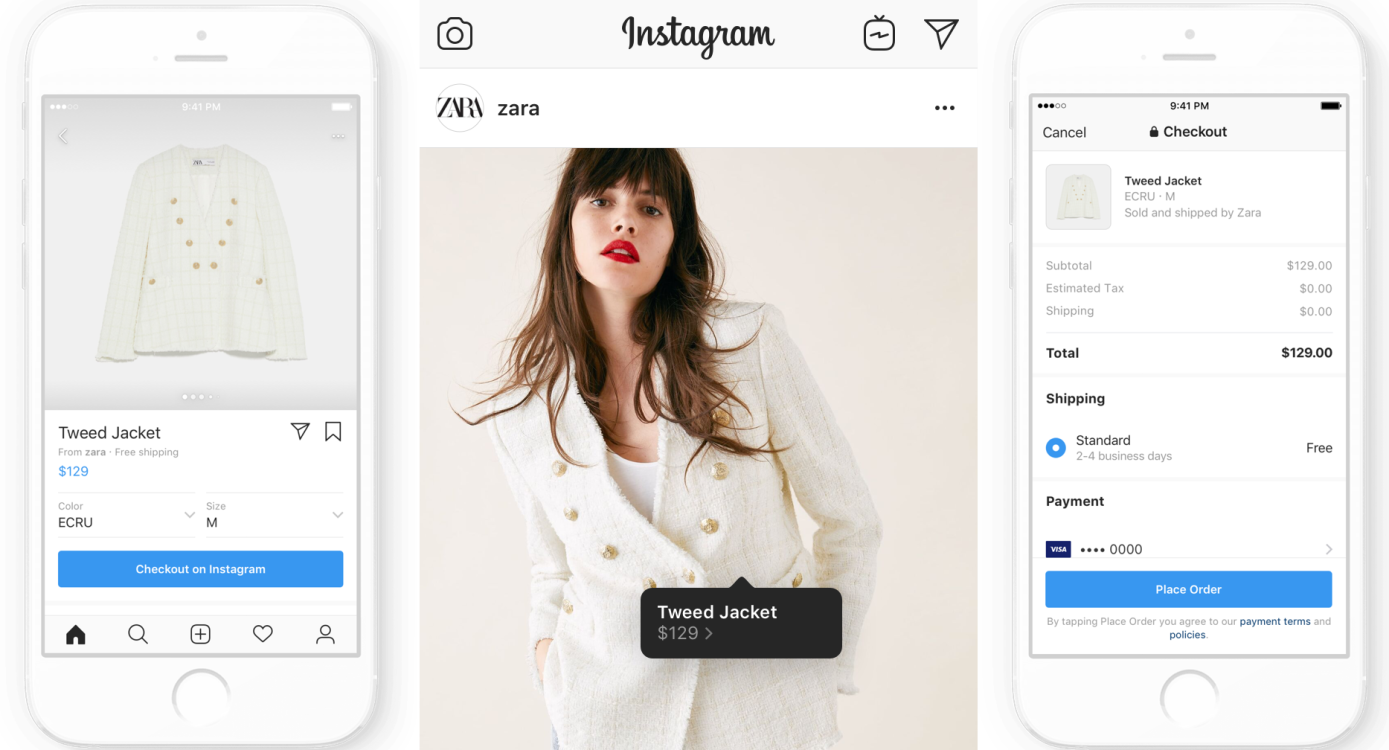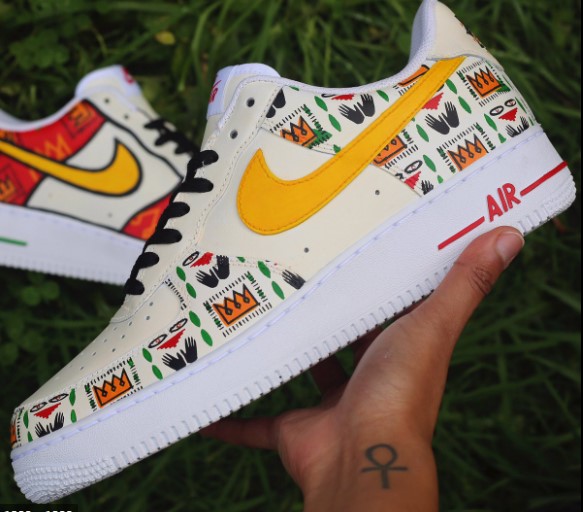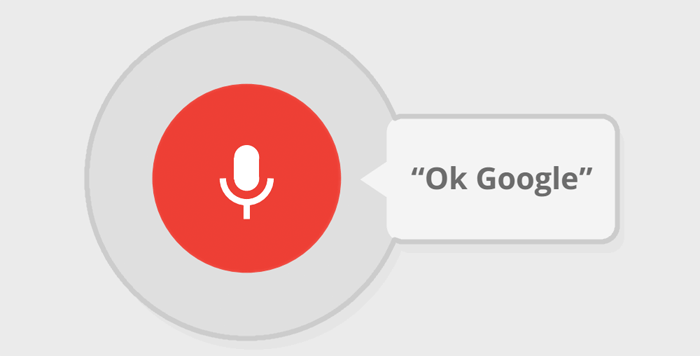E-commerce is huge. And you’ve probably already spotted a wide range of new tools and strategies designed to make online shopping a breeze. While covid-19 resulted in a digital spending splurge, particularly during periods of forced lockdown, many consumers appear to have altered their buying habits indefinitely. So what are the e-commerce trends to watch in 2022?
The Booming World of e-Commerce – What You Need to Know
Fun Fact: In March 2020, about 40% of UK shoppers said they had been shopping more online, compared to before the coronavirus pandemic. By February 2021, however, this percentage had grown to approximately 75%. In fact, it’s thought total e-commerce sales in 2021 will be over $147 billion more than would have been expected prior to the C word.
So, let’s take a closer look at the ever-growing e-commerce market and check out the very best 2022 e-commerce trends that should definitely be on your radar for the year ahead.
The e-commerce share of retail sales has been on the increase in recent years. Two years ago in 2019, the online retail market share was at 13.8%. That is to say that for every $100 spent by consumers, $13.80 was online. In 2021, this figure is expected to finish at 19.6% to $4.921 trillion in global e-commerce sales. This is a whopping 42% increase in the e-commerce market share in a matter of two years. The growth is set to continue and reach 24.5% by 2025 – a 10.7 percentage point increase in just over half a decade. With this data undeniably showing increasing growth in the e-commerce sector, some business leaders and owners may find it useful to research and even potentially read an article from News Anyway or speak to a retail advisor, to possibly learn more about growing their customer base online.
On a similar thread:
- E-commerce market share in the US is expected to come in at 15.3% in 2021. This is set to rise to 17.3% in 2022 and 23.6% in 2025.
- Analysts have noted that e-commerce now accounts for more than one quarter of all retail sales in the UK. This number is expected to steadily increase in the years ahead and is set to account for nearly one-third of all retail sales by 2024.
Fun Fact: The UK e-commerce market’s largest segment is Fashion with a projected market volume of 27,060 million in 2021.
All eyes should be on e-commerce. That’s a fact. So here are 7 of the best e-commerce trends to weave into your marketing strategy for 2022.
#1: Social Media as a Shopping Platform
Did you know that that searches for ‘Instagram Shopping’ have increased 78% over the past five years? Or that, with an annual growth rate of 31%, the global social commerce market is expected to grow to $604 billion by 2027? According to research data analysed and published by Stock Apps, 15% of e-commerce companies worldwide are already selling on social media while 25% are planning to start. So to keep up with the competition, it’s really important to think carefully about your social strategy.
Let’s look at how Instagram can be used to ramp up your e-commerce efforts using social media. The platform is loaded with features that allow people to easily shop your brand’s photos and videos. For example, you can create a shop or storefront on Instagram which allows people to browse products and explore collections. You can also use Product Tags. These let you highlight items from your catalogue directly in your images and videos, so people can easily tap and learn more. Ads with products tags are another great way to increase the reach of your shopping posts. These can be set up in Ads Manager.

What’s also cool is the Checkout on Instagram feature. This makes it easy for consumers to check out in-app, rather than directing them to another site. After all, the simpler you make the sales funnel, the less likely you are to loose people along the way. In May 2021, Instagram also launched a ‘Drops’ feature under the Shop tab. This allows businesses with Checkout on Instagram to announce an upcoming exclusive ‘drop’, so people can preview details and set reminders to buy as soon as its available. This tool is currently only available to eligible US businesses only. But watch this space as it should roll out to more companies soon and is a great way to create a buzz around a specific product or service. The Drops feature also works extremely well with limited edition or time-limited offers.
#2 New Social Media Tools for Improved Communication
Facebook is another platform that’s embraced social commerce in recent years. Businesses can create their own Facebook Shop or sync an existing e-commerce platform to Facebook. There’s also Facebook collection ads. These appear in a mobile-only format and are designed to maximise the mobile user experience. Ads are found on both Facebook and Instagram. People who tap on collection ads are seamlessly taken to a fast-loading, full-screen experience to browse or learn more about the ad offer.
But Facebook has also realised how important it is to connect with consumers during the buying process, which is why they’ve introduced a raft of new tools such as click-to-message ad options. According to Facebook CEO Mark Zuckerberg, enabling commerce and making it easier for businesses to communicate with customers through its Messenger and WhatsApp apps is ‘the right long-term bet.’
So, what can you expect? Well here’s what Facebook had to say about their new click-to-message ad options:
“Businesses can already buy ads that encourage people to message them, whether in Messenger, Instagram Direct or WhatsApp. Now, businesses can choose all the messaging platforms where they’re available to chat, and we’ll default the chat app in your ad based on where a conversation is most likely to happen.”
When you create a message ad, Facebook’s systems will detect the messaging platform used most often by the individual user, then prompt them to message your brand on that service. Considering 75% of adults want to communicate with a brand via messaging, this communication tool will help facilitate e-commerce and boost revenue. As a brand, you’ve just got to be on-the-ball when it comes to replying.
And as for Facebook Metaverse? It’s sure to impact e-commerce trends but as yet we don’t have too much information.
With the basic idea that the metaverse will be a virtual world alongside and complementing our physical world, it follows that eCommerce will be part and parcel of the metaverse. After all, we buy sell things in the “real” world, so why not the metaverse? And you can be sure a company like Meta (née Facebook) wouldn’t be investing so heavily and so publicly in the metaverse if there wasn’t cash in it.
#3 Mobile Shopping Boom
The increase in mobile shopping is another noteworthy e-commerce trend. Sales from mobile e-commerce are set to rise 15% by the end of 2021, with mobile sales accounting for 73% of all e-commerce sales. Just looking at these stats, it’s easy to see how important mobile shopping will be to e-commerce companies in the coming years, so companies really need to have their mobile marketing strategy on-point.
There is an evident increase in the volume of shopping orders made over the many mobile shopping apps available to us. This demand has been rightfully met by an increase in the number of dropshipping companies operating and improved Automated Material Handling Solutions throughout the world. On first look, moving thousands of shopping orders between sellers to their rightful customers on a daily basis might look very overwhelming. In reality, however, this retail strategy becomes a lot more manageable when using some form of automation, integration, and data-driven methods like those offered by an appscenic dropshipping platform. As a result, it has become commonplace for a wholesale supplier, website, or an e-commerce platform to make money without ever seeing the product in person.
The importance of being mobile-friendly is not new. Google now takes a mobile-first approach which means the URL of the mobile-friendly version of your site is indexed. Your website should therefore be optimised for usability. Keep in mind that the text needs to be appropriate for the user’s screen size and images must be fast loading and well-optimised for mobile. Your mobile site should also be thumb-friendly. This means essentials such as navigation buttons, menus and calls-to-action should be in a space your thumb can reach.
Moreover, you can also get an e-commerce application developed for mobile phones. You could explore and consult a few App Development Companies that can analyze requirements, budget, and other crucial details of your business, to develop a customized app that could be used on Android and iOs devices. This can help your business to grow and attract new customers.
#4 Voice Search will Shape the Future of e-Commerce
72% of people who own voice-activated speakers use these devices as part of their daily routine. After all, it’s much easier to speak into your device than type in a search query. Personally, my friends and I all leave voice notes instead of typed messages so I can see why this is easier. Additionally, voice search is much more useful when cooking or driving. “Ok Google, how do you scrape burnt cake off a pan?”
As a result, voice-enabled shopping has seen huge traction in the past few years and experts predict a further surge in the demand for a voice-driven user experience. A forecast by the UK based analysts at Juniper Research, shows that voice commerce will grow to reach more than $80 billion per year by 2023.
Overlooking voice search for e-commerce can mean losing out on obvious opportunities, so why not optimise for this new trend? Here are some top tips:
- 20% of voice searches are triggered by a set of 25 keywords such as: What? When? Why? Where? Or how? So it’s a good idea to create question and answer content that’s likely to be picked up.
- 76% of smart speaker users perform local searches weekly. So make sure you embrace local SEO and optimise for location-based keywords.
- When speaking, people tend to use long-tail keywords rather than short-tail. So it’s a good idea to conduct both long and short-tail keyword research for your brand and build a strategy around the results.
Check out more Google friendly tips here.
#5 Sustainability Will Become an Increasingly Important Factor
With environmental issues thrust into the limelight, consumers are on the lookout for sustainable products and are more likely to support companies with strong ethics in this area. Consumer principals undoubtedly filter through to the world of e-commerce, so let’s check out some of the stats that brands should be aware of.
- According to a Deloitte study of sustainability and consumer behaviour in 2021, nearly 1 in 3 consumers claimed to have stopped purchasing certain brands or products because they had ethical or sustainability concerns about them.
- In the last 12 months, 49% of consumers have bought more seasonal products and 45% of consumers bought more locally produced goods.
- Also, check out the below for marketing ideas you can push to show that you embrace sustainability and are doing your bit for the environment. Something as simple as switching to recyclable packaging or showing your commitment to waste reduction could impact heavily on your e-commerce sales.
#6 Augmented and Virtual Reality will Flourish Even More
E-commerce has plenty going for it. Buying online is quick and hassle-free, with many companies even swallowing the costs of packaging and deliveries in order to deliver competitive prices. The downside of e-commerce, however, is that it’s often harder for consumers to get a true feel for a product, whether this be dining room furniture or concealer. The good news is that many retailers are now embracing augmented and virtual reality in order to deliver a more personalised experience to consumers.
This is particularly relevant considering:
- 63% of consumers believe AR will transform their shopping experience
- 61 of consumers indicate they would prefer to make purchases on a site that offers AR technology
- 70% of consumers report they would be more loyal to brands incorporating AR as part of their digital shopping experience
With 53% of customers feeling that retailers are failing to take full advantage of AR; brands have plenty of time to play around with technology and to up their AR game. If you’re not sure where to start, here’s a little inspiration.
IKEA Place – the IKEA Place app helps customers visualise products from its catalogue, through AR, at true scale, within any space.

Brilliant Earth – This brand uses AR to create a Virtual Try On service to create the perfect wedding or engagement ring. Your own tailored design can then be saved and shared with friends.
Nike – This world-famous sportswear brand uses AR to measure the feet of consumers and to sell footwear that actually fits. Genius.
The most important thing to remember with augmented reality is that it should benefit the consumer and bridge the gap between in-store and online purchases. Essentially, you want to solve problems that might arise from not visiting a store and use technology to present a digital solution. This gives consumers no excuse to abandon their retail journey.
#7 Customisable e-Commerce
This is already in full-swing but expect to see many more customisable e-commerce options in 2022. Nike, for example, is already offering customisable trainer options that allow you to choose everything from the material to the colour.

As a forward thinking brand in 2022, you can get information for a customisable campaign by conducting polls, surveys and questionnaires on social media in a bid to gain deeper insights into what consumers want to see. The answers you receive can then be used to inform a customisable e-commerce option on your website.
Want to get ahead for 2022? Let’s work on tailoring your marketing strategy to help you meet your KPIs and follow the ever evolving digital landscape. Enjoyed reading E-commerce Trends to Watch In 2022? Hit share 🙂
